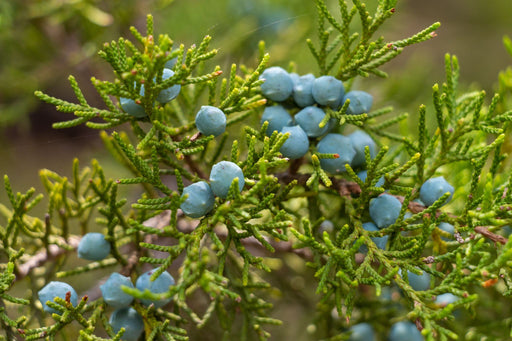Does Cedar Kill Moths?

From as far back as Ancient Greece, the magic of cedar has been used to protect out-of-season clothing from becoming a heap of moth-bitten scraps. Interestingly, many Turkish carpet shops use cedar wood panels on their walls to stop Clothes Moths from chewing through their wares. The belief is that cedar wood and cedar oils can kill moths and drive them far away. But is that the truth? Should you go out and purchase a massive cedar chest for your valuable wardrobe? Or are you better off using another alternative? We’ve got the answers!
Does Cedar Really Kill Moths?
From as far back as Ancient Greece, the magic of cedar has been used to protect out-of-season clothing from becoming a heap of moth-bitten scraps. Interestingly, many Turkish carpet shops use cedar wood panels on their walls to stop Clothes Moths from chewing through their wares. The belief is that cedar wood and cedar oils can kill moths and drive them far away. But is that the truth? Should you go out and purchase a massive cedar chest for your valuable wardrobe? Or are you better off using another alternative? We’ve got the answers!
However, over time, the cedar is going to lose its natural oils. An antique cedar chest is going to be far less effective at repelling moths than a new chest. Larvae and pupae won’t be affected by the oil if they are already inside the chest.


Why Should You Use Cedar for Moth Prevention
Around the 1920s, scientists started paying attention to the effect of cedar on fiber-eating insects, like moths and carpet beetles. The species of tree that produces cedar wood and oil is known as Cedrus atlantica. In the oils of Cedrus atlantica are chemicals—sesquiterpene hydrocarbons—that give off a resinous, camphor-like scent. With up to 70 percent of the oils in cedar wood containing these potent compounds, it is believed that is the reason most cedar species are insect-repellent.
Interestingly, it’s not Cedrus atlantica that is used to make most commercial moth repellents. That task belongs to cedar-scented trees like Eastern Red Cedar (Juniperus virginiana), which isn’t a true cedar tree but a type of juniper. The chemical makeup of the oils produced by Juniperus virginiana have similar qualities to real cedar wood oil, including the ability to repel moths. So, the next time you’re out shopping for cedar hangers or blocks, you’re probably holding juniper in your hand, not real cedar wood.
But how does this wondrous moth-repelling oil work exactly? The scent itself is not responsible for deterring moths as much as it is camouflaging the scent of a moth’s natural target—keratin.
Again, it’s only a temporary distraction, as the oils in cedar do not last long. You can purchase cedar hangers, cedar blocks for moths, and sachets for your clothes and bureaus, but they will be effective for about 3 months. After that, your two options are to go out and purchase more cedar items or to sand down your existing cedar and apply more oil.
This isn’t meant to dissuade you from using cedar, however. As a natural alternative to something more toxic, like mothballs, cedar works well. You can even pair it with other herbs and oils to make it more effective. Keep in mind that you might prefer to use something natural and safer around children and pets?

How to Use Cedar for Clothes Protection
With cedar, you get three options: planks or blocks, cedar chips, and cedar oil. You can find cedar blocks for moths that can be hung in the closet or even have shelving made out of eastern red cedar (which is more potent than western red cedar). Blocks made out of cedar can also be placed in baskets or among your folded sweaters and t-shirts.
Cedar chips are commonly used for lining cages and dog boxes, but there is another use for them. Find a mesh bag (even a mesh laundry bag) and place a handful of cedar chips inside. Hang the mesh bag in the closet so that air can pass through and circulate the scent. Replace the chips routinely, since the greater surface area will make the oils evaporate more quickly.
Cedar oil is another possibility. If you have cedar panels or a cedar chest, you can sand some of the wood then reapply cedar oil. That will replenish some of the effectiveness for a couple of months. Another option is to pour some cedar oil into a diffuser and place it inside your closet or in the room. Make sure to refill the diffuser whenever the oil has evaporated. Don’t worry if you don’t own a diffuser. The same effect is possible by spraying cedar oil into the corners of the closet, adding drops of the oil to balled up socks, or putting some into potpourri.

Cedar vs Alternatives
What are some alternatives to cedar that will work equally as well? While mothballs were once a popular remedy to moth infestations, they are far less so these days. The reason is that mothballs contain a synthetic chemical that is highly dangerous for humans and animals when inhaled. The pure paradichlorobenzene or naphthalene used in mothballs causes a broad range of health complications and imbues clothing with a horrible chemical scent. So stay away from those.
A safer option to cedar would be neem oil, otherwise known as Indian lilac. Neem oil, which is used in many kinds of moth oil sprays (found in the UK), can repel a number of insects found in the house, including clothes moths. Other natural moth repellents include mint, rosemary, cloves, lavender, thyme, and eucalyptus.

Now, can cedar be used together with neem oil and other insect-repelling herbs and plants? Of course. You can spray a combination of neem and cedar oil around the house. Place lavender and peppermint sachets in the closet along with cedar hangers. Mix together cloves, lavender sprigs, and cedar chips then place near your clothing.
There are dozens of ways to repel and kill moths that have nothing to do with using hazardous mothballs. You may like to read our handy Clothes Moths Kit Guide which is full of useful information to help you deal with a moth infestation.
Cedar, the Safer Option?
Cedar may not be the definitive moth-killing solution you imagined , but it is effective at protecting your clothing from hungry moths. You can use cedar in combination with neem oil and other natural repellents to keep your home moth-free. However you choose to use cedar, though, it will always be safer and healthier than mothballs.

About MothPrevention
MothPrevention® speak to customers every day about their clothes moth issues - clothes moths are a species that are ever increasing and that can cause significant damage to clothes, carpets and other home textiles.
To date, we’ve helped over 250,000 customers deal with their moth problems. We have developed professional grade solutions including proprietary pheromones and trap design, not available from anybody else in the USA.





